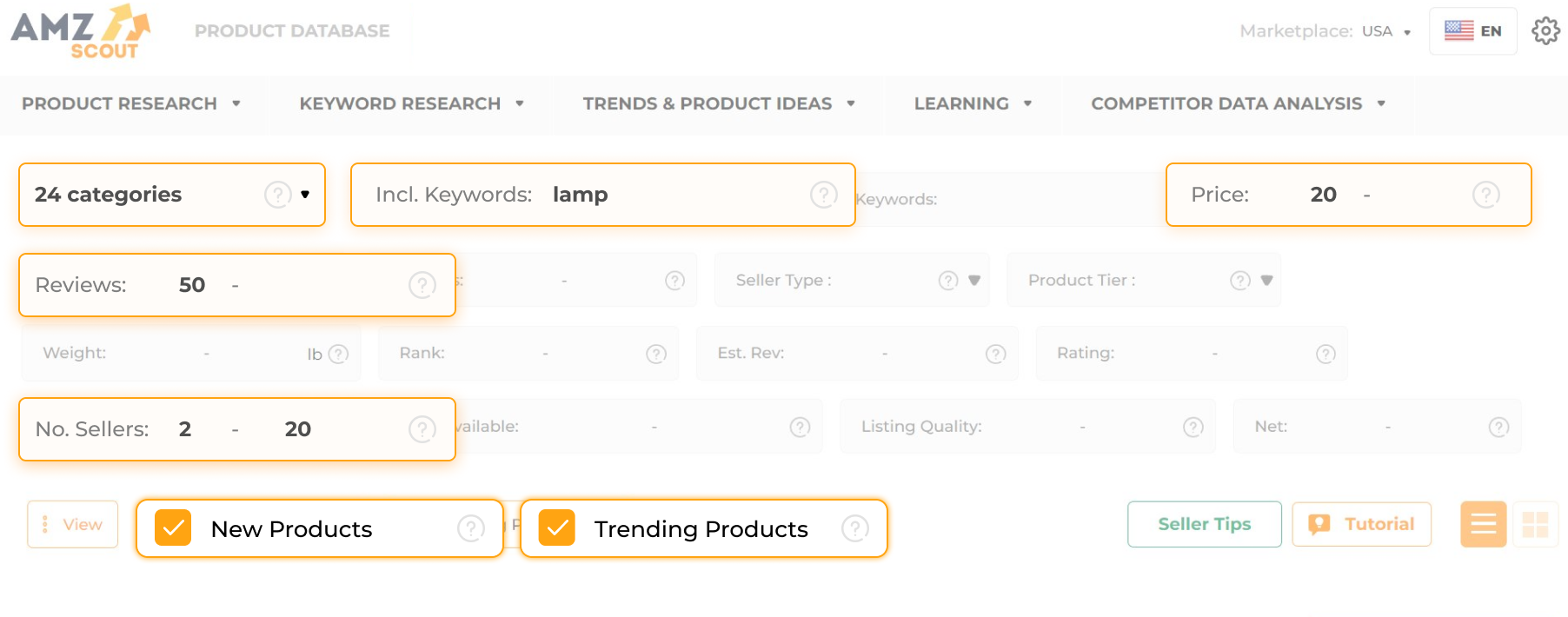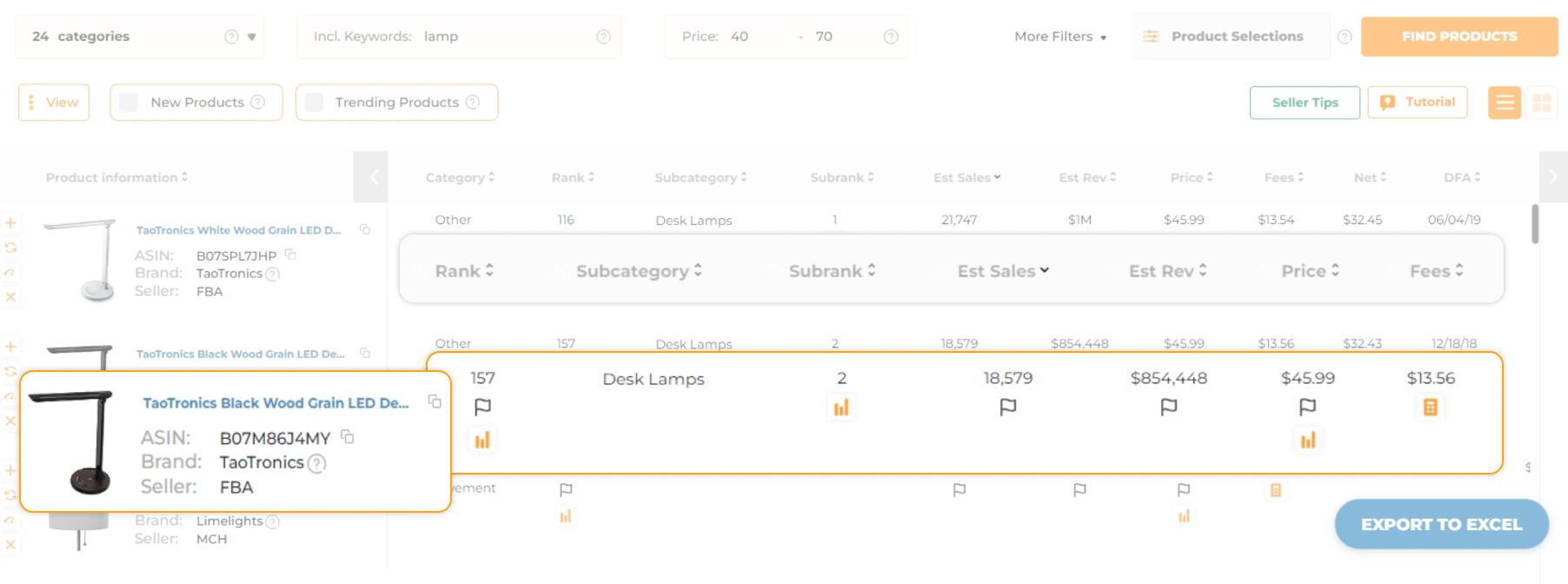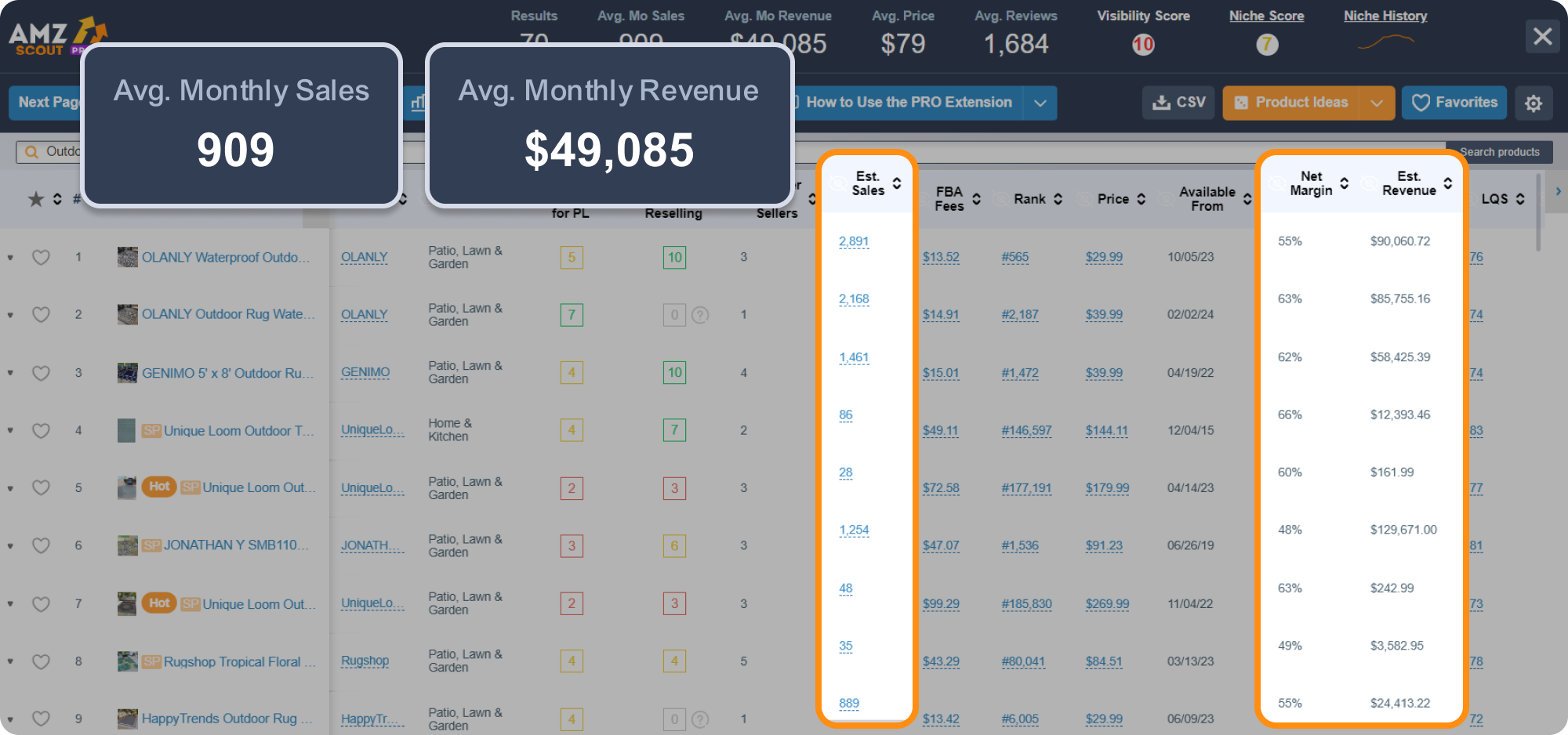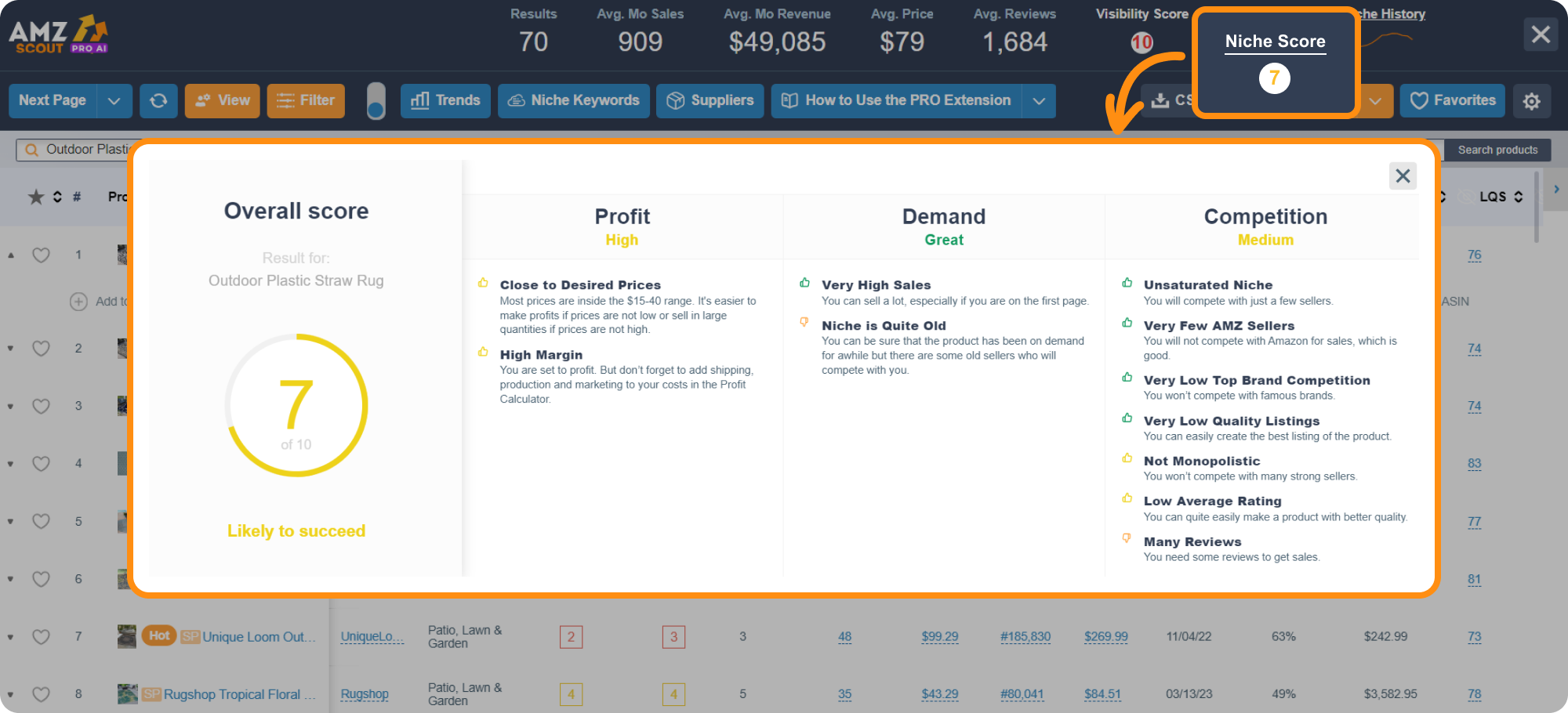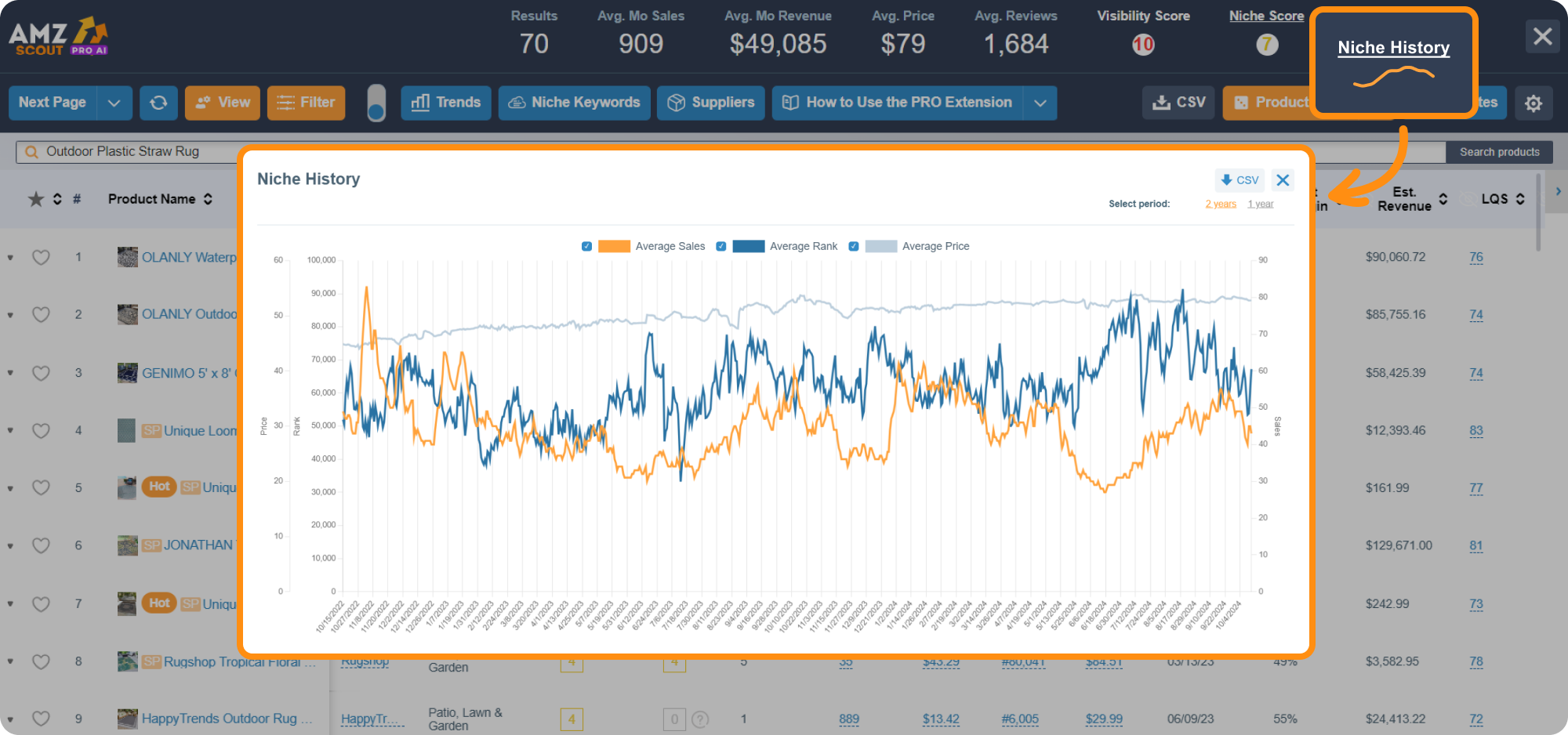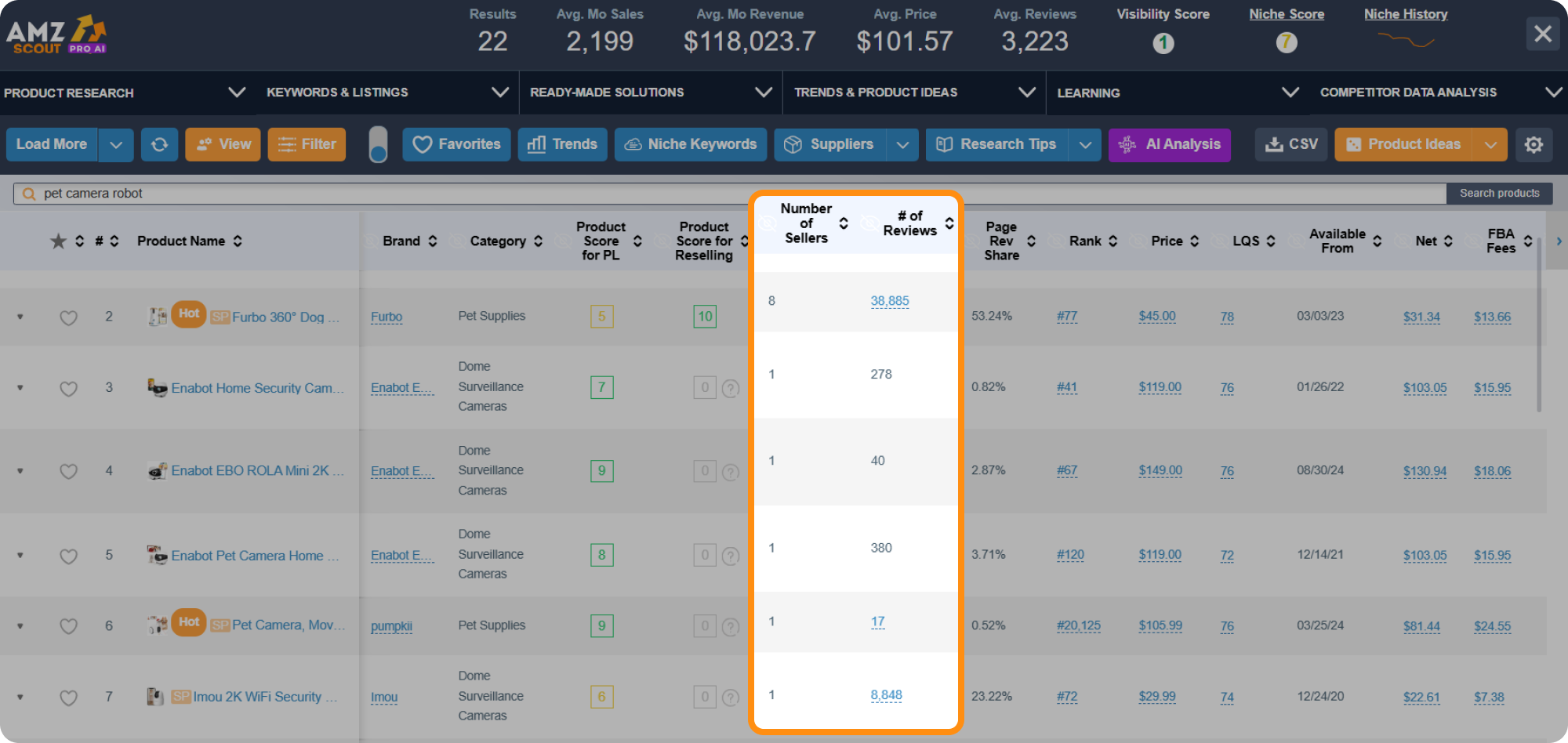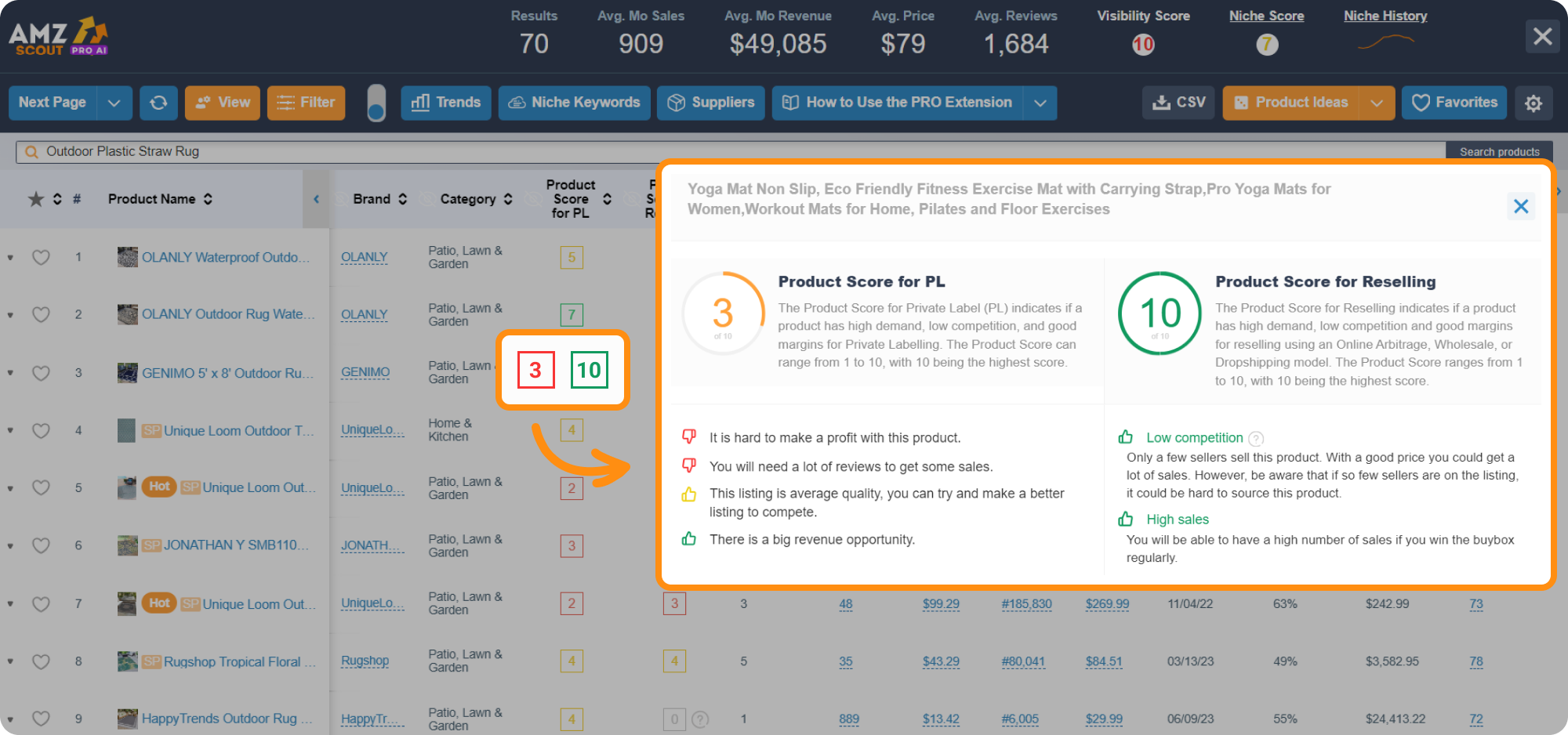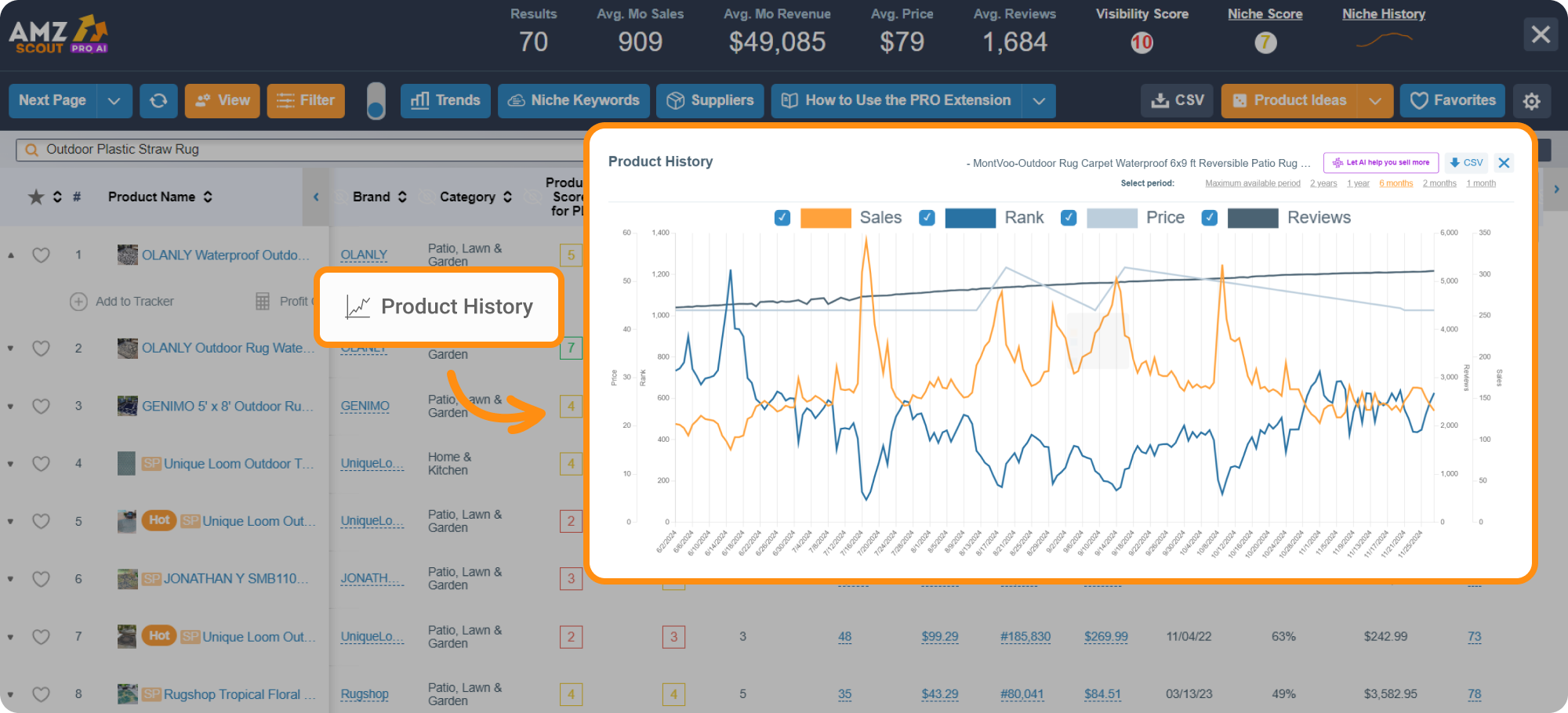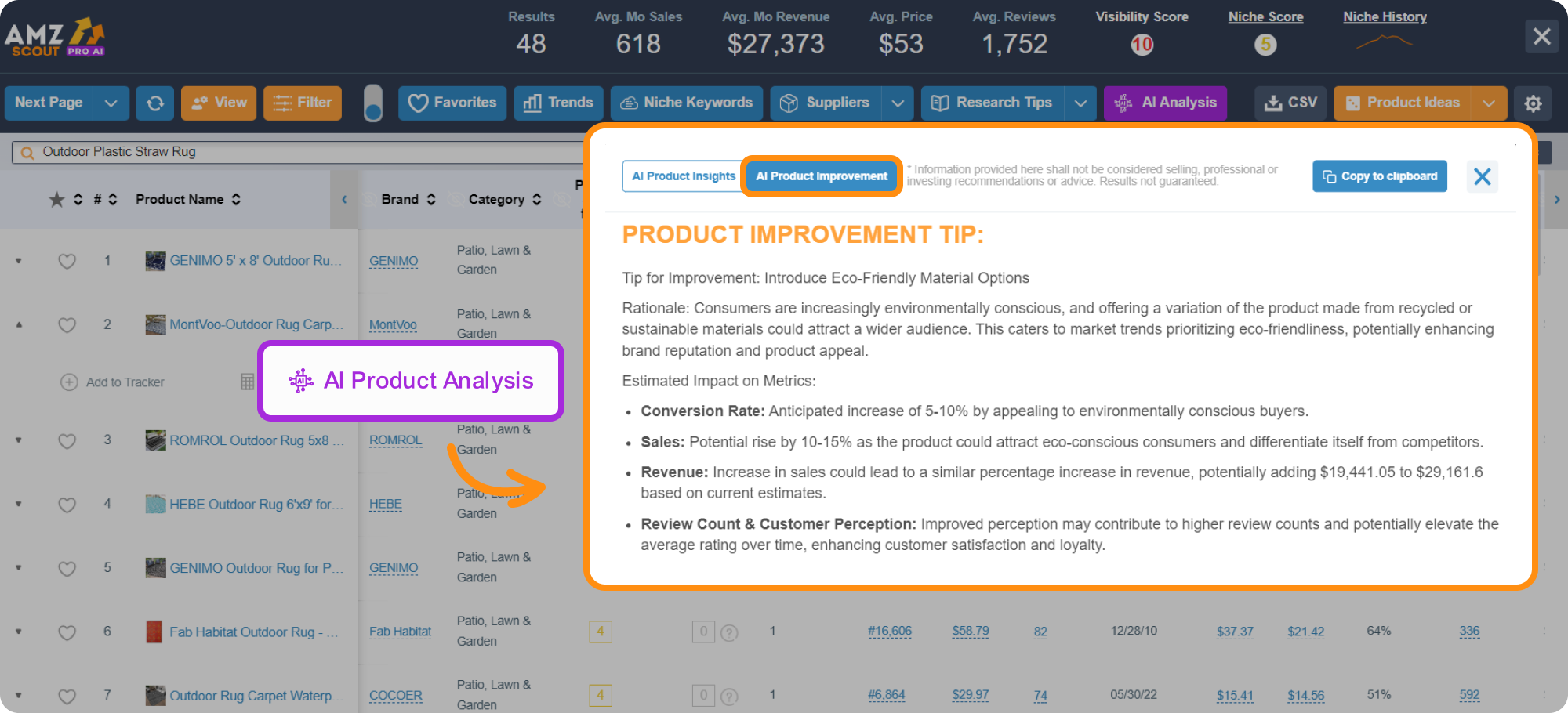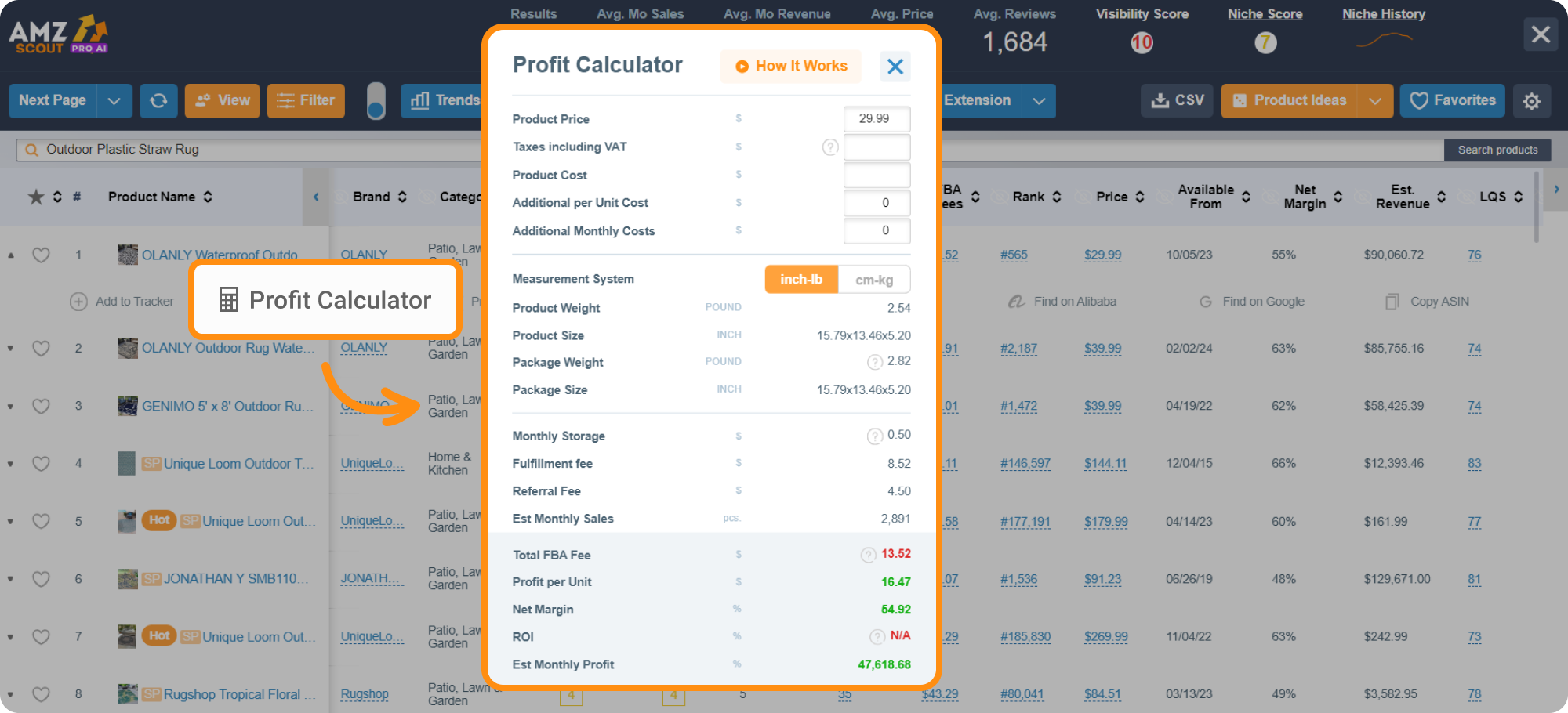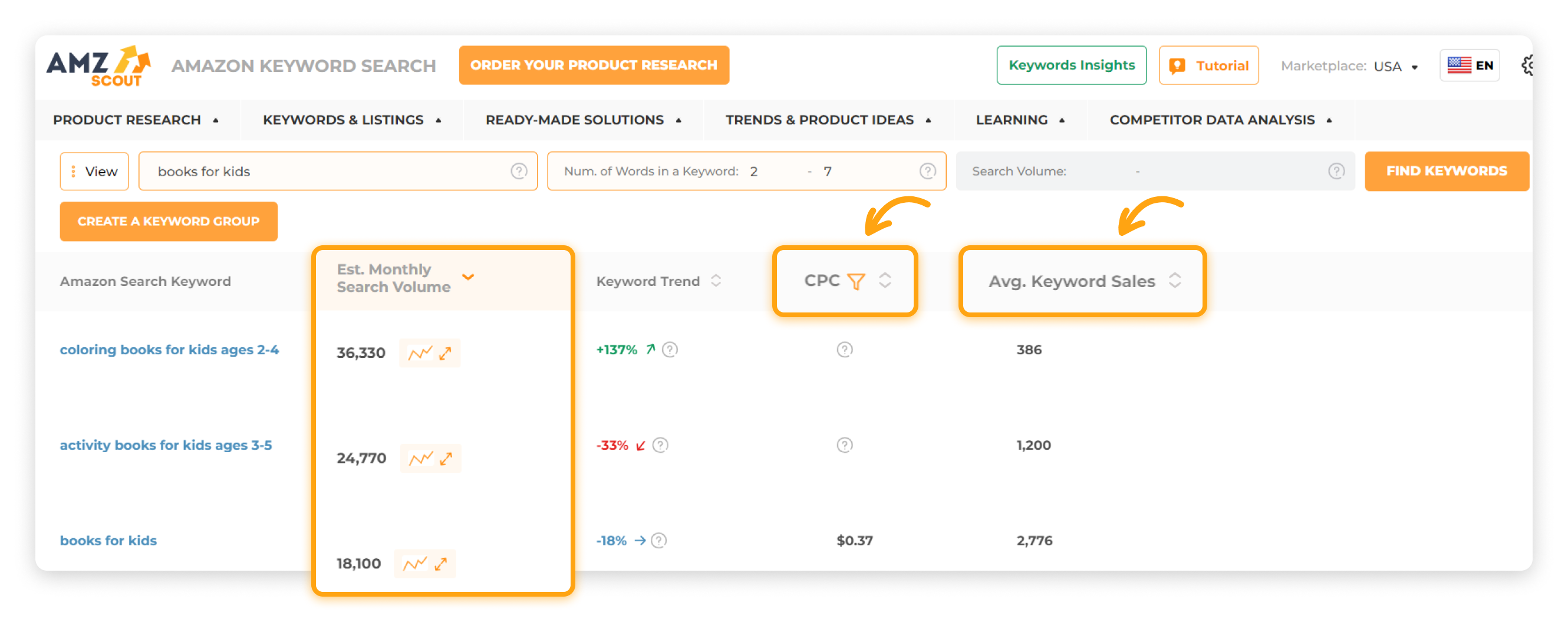
Conduct Amazon Market Research Using Intelligence Tools: A Seller’s Guide
If you want to succeed on Amazon, understanding the market is essential. This knowledge allows you to align your business strategy with customer demands and industry trends, ensuring relevance and competitiveness. Fortunately, the process of gathering market insights can be streamlined significantly with the help of specialized tools.
In this article, we’ll dive into how special software can help Amazon sellers gain a clear understanding of the market, and provide a step-by-step guide to conducting effective market research.
Table of contents
What is Amazon Market Research?
Amazon market research is the process of analyzing the marketplace to understand demand, pricing strategies, and customer behavior by reviewing historical data and trends. These insights allow sellers to fine-tune their strategies, differentiate themselves from competitors, and present more attractive offers to customers.
Market research also enables sellers to minimize risk and maximize profitability by answering crucial questions, such as:
What products are in high demand and worth sourcing?
What are the optimal price points for my products?
Who are my main competitors, and how are they positioning their products?
Are there seasonal trends or patterns that I should consider?
...And more!
Whether you're a new seller or an experienced one, Amazon market research is a vital step toward building a thriving ecommerce business.
Types of Market Intelligence Tools
Market intelligence tools equip Amazon sellers with precise, data-driven insights across various aspects of their business, enabling them to optimize performance and stay ahead of the competition. Here are the primary areas where market intelligence tools can elevate your strategy:
Product Research
These tools are designed to analyze sales data, competition, and market trends, helping sellers assess product viability and market saturation. By evaluating factors like estimated sales volume, average selling price, and potential demand fluctuations, sellers can make informed decisions about which products to source. This data is especially valuable when choosing new products to sell on Amazon, as it helps sellers identify the best opportunities before launching a product.
Keyword Research
Specialized software helps sellers identify high-traffic, relevant keywords by analyzing customer search behaviors, identifying trending products, and predicting market demand. This information also enables sellers to optimize their product listings, refine their PPC strategies, and secure higher search rankings, resulting in greater visibility, increased traffic, and ultimately, sales growth.
Competitor Analysis
Tools that allow you to track competitors' prices, product performance, and strategies. These give you a competitive edge by revealing what’s working in your niche, as well as pricing trends, advertising efforts, and inventory management. By identifying the strengths and weaknesses of your competitors’ approaches, you can adjust your own strategy, find gaps in the market, and seize opportunities for growth.
Review Analysis
Collecting and analyzing customer reviews helps you understand valuable feedback, common issues, and areas for enhancement. For brand owners, this process is essential for improving product quality and customer satisfaction. However, AI tools may not always discern whether feedback is truly significant or just a matter of individual preference.
Profitability Analysis
These tools collect performance data and generate detailed reports, allowing you to evaluate sales trends, profit margins, and overall product performance. The information helps you identify underperforming products or bestsellers, enabling you to adjust pricing, inventory, and marketing strategies. Additionally, profitability analysis tools assist with inventory forecasting and cost optimization, allowing you to make strategic decisions that maximize revenue while minimizing costs.
Utilizing tools can significantly streamline your Amazon market research by providing access to data that would be extremely time-consuming or even impossible to gather manually. Below, we’ll walk you through how to do your own Amazon market research using the AMZScout toolkit, which is renowned for its user-friendly interface and accurate data.
Steps to Conducting Amazon Market Research
There are several approaches to performing Amazon market research, each of which provides distinct insights into the marketplace. Below, we’ll outline a method specifically designed to help you find a profitable product to launch under your own brand.
Note: While the focus here is tailored to brand-building, some of these insights may also be applicable to other business models and goals.
Step 1: Track Product Trends
First and foremost, it's important to get an idea of which products might be profitable and trending right now. There are various ways to do this, such as checking TikTok or studying Google Trends, but we'll use the AMZScout Product Database as a starting point.
This tool provides a quick and efficient way to generate ideas that match your preferences. With data on over 600 million products available on Amazon and an intuitive interface, you can easily identify promising opportunities in just three simple steps.
Here’s how to use this tool effectively:
1. Access the AMZScout Product Database. Sign up with your email address to start a free trial.
2. Start your search. Apply specific filters to help you narrow down your search. Some universal filters to consider include:
Estimated Sales: Set a minimum of 300 sales/month to ensure consistent demand.
Category: Choose from 24 categories to focus on products that match your interests.
Weight: Select products weighing up to 5 lbs to keep shipping costs manageable.
Optional: Consider choosing the ‘New and Trending Products’ option to see recently added and high-performing products.
3. Generate your product list. Once your filters are set, click Find Products to view a list of items that match your criteria and are worth further investigation.
The AMZScout Product Database simplifies the initial product research process and helps you identify potential winners. Now, let's proceed to the next step.
Step 2: Analyze the Niche’s Profitability
The success of individual products can be influenced by factors such as advertising, chance, or the seller’s expertise. To make well-informed choices, it's more effective to start by evaluating the performance of similar products. Here’s how to do that with the AMZScout PRO AI extension:
1. Install the AMZScout PRO AI Chrome Extension.
2. Search for a product on Amazon. Enter the type of product you found in the AMZScout Product Database into Amazon's search bar. Open the extension by clicking the icon in the top-right corner of your screen.
3. Evaluate the profitability of the niche. Review the following criteria at the top of the extension window:
Average Monthly Sales
Average Monthly Revenue
Average Product Price
If the niche shows sufficient profit potential, proceed with deeper research. If not, simply click the orange "Product Ideas" button in the upper-right corner of the window to explore alternate product suggestions.
4. Analyze the niche’s performance. Click on the Niche Score in the upper-right corner to receive a rating that takes into account demand, competition, and profit combination. A score of 7 or higher indicates strong prospects.
5. Review demand trends. Check the Niche Sales History in the top-right section to track how sales have changed over time.
After evaluating the niche, your next step is to assess the competition, as this plays a crucial role in determining your ability to enter and succeed in the market. Let’s explore this further below.
Step 3: Evaluate Competition Within the Niche
Even if a niche seems promising at first glance, it’s important to evaluate competition within the niche to avoid unnecessary risks and wasted effort. Here's how to analyze the competition effectively:
1. Analyze the number of competitors. Search for your target term on Amazon. Anything over 1,000 results means high competition, while fewer results suggest lower competition and easier entry.
2. Examine the reviews. In the PRO AI Extension, consider the following:
Number of reviews: Look at the "Average Reviews" in the header. If only a few sellers have received many reviews while the rest don’t, the competition is probably low. However, if many sellers have high review counts, the competition may be tougher.
Presence of leading brands: Click on "# of Reviews" in the column list to sort by products with the highest review counts. If the market is dominated by well-established brands, it may be more difficult to gain traction with a new brand.
4. Evaluate the performance of new competitors. Click on the Available From column in the PRO AI Extension to sort products by their launch date. Look at the newest entries and check their earnings using the Estimated Revenue column. If new sellers are generating significant revenue, this indicates opportunities within the niche.
Once you confirm that the competition is manageable, you can move from general niche analysis to more in-depth product research.
Step 4: Analyze Product Viability
After identifying a viable niche, your next step is to pinpoint products that are worth selling. Follow these steps to refine your search:
1. Narrow down your search. Use the column headers in the PRO AI Extension to identify products that are suitable for launching your own brand. For instance, if you click the Product Score for Private Label column, it will prioritize listings that are the best fit for your business model.
2. Check the product’s demand. Click Product History under your chosen item to view a detailed sales trend graph. Focus on products with steady sales patterns, as these suggest consistent demand and strong profit potential.
3. Assess the product fit’s for your business. Click AI Product Analysis for a detailed overview of the product. The AI Product Insights feature will open automatically, summarizing the product’s key strengths and weaknesses. This analysis identifies opportunities and potential risks, which will help you decide if the challenges are manageable and if the product aligns with your goals.
4. Evaluate profitability. Use the Profit Calculator available under the product listing to calculate net margins. Aim for a margin of at least 20% to ensure that it covers Amazon FBA fees and operational costs while remaining sustainable.
Optional: Choose the best product option. When evaluating several products, add your top picks to your "Favorites" list. Next, navigate to "Product Comparison" in the top-left menu to view a detailed side-by-side breakdown. This feature highlights the strengths of each option, helping you pinpoint the product with the highest potential for success.
This approach will help you identify products with the greatest profit potential and ensure that you focus on high-demand, high-margin options. By selecting the right products, you’ll set a strong foundation for your business’s success.
Step 5: Check for Limitations of Selling a Product
When launching a new product on Amazon, you also need to ensure that it complies with Amazon's policies and guidelines, as this can affect your ability to sell and the speed at which you can start your business. Here are three key factors to consider:
Gated Categories: Some categories are restricted, and you need to provide additional certifications or meet specific performance levels to gain approval.
For example, selling precious jewelry requires certification, FTC and CPCS compliance, 12 months of selling experience, and $50,000 in annual revenue.
HAZMAT Status: If a product contains hazardous materials, it may require Amazon’s approval and a review to ensure that it meets safety standards.
For example, chargers with lithium batteries and toys with magnets may be considered to contain hazardous materials.
Country/Region Limits: Regulations can vary by country or region.
For example, in California, many products are subject to additional regulations. Each country also has its own labeling rules for selling specific items, like alcohol.
By assessing these key elements thoroughly, you ensure that the products you're considering are free of restrictions, setting you up for a smoother and more successful selling experience on Amazon.
Step 6: Monitor Reviews and Customer Sentiment
As part of your ongoing market research, tracking product reviews and customer sentiment is also essential to staying competitive. Analyze both positive and negative feedback regularly to help you understand customer preferences, common concerns, and areas where your product can be improved.
However, it’s critical to focus on patterns rather than individual opinions, which requires reviewing feedback from similar products as well. While this task can be time-consuming and demanding, the AI Review Analyzer significantly simplifies the process. Here’s how to use it:
1. Go to the AI Review Analyzer page. Enter your email address to start a free trial (you’ll get one free product check).
2. Enter the ASIN. Click “Analyze Product by ASIN”, input the product’s ASIN, and click “Get Review Analysis”.
3. Get the results. The tool will generate detailed statistics, graphs, and text-based insights based on customer reviews.
These insights help you spot strengths and weaknesses fast, revealing what customers love and dislike. By tracking sentiment and refining your products, you’ll be able to keep your brand aligned with expectations and competitive in the market.
Step 7: Gain Insights for Your Marketing Strategy
The final step of your market research is getting insights to fine-tune your marketing strategy. This includes optimizing your product listing and running effective ads. Both of these tasks require in-depth keyword research to ensure that you're targeting the right audience.
Instead of scrolling manually through Amazon listings and reviews to spot frequently used keywords, you can streamline the process with AMZScout’s keyword research tools. Here's how:
1. Go to the AMZScout Keyword Search page.
2. Start your search. Type in a keyword or phrase that’s relevant to your product. You can also refine your search further by adding criteria, such as keyword count and search volume.
3. Review the results. Click Find Keywords to generate a list of potential keywords. Results are sorted by estimated monthly search volume, with the top ten keywords shown first.
These keywords can help you target the right audience when running Amazon ads, balancing both reach and cost-effectiveness. You can also use these keywords to help you optimize your product listing.
Note: AMZScout’s AI Listing Builder can quickly integrate these keywords into your product descriptions or pull keywords from your competitors, saving you time and boosting your listing's visibility.
By leveraging these insights, you not only optimize your marketing strategy but also attract more traffic to your store, improving your overall sales performance.
By following these steps, you can achieve a more comprehensive understanding of the market. Leveraging this flexible strategy allows you to gain deeper insights, make informed decisions, and enhance your chances of success on Amazon.
Conclusion
Amazon market intelligence provides a wide range of tools to support nearly every task an Amazon seller might face. However, juggling multiple tools can quickly become time-consuming and inefficient. Consider opting for the AMZScout suite, which provides all-in-one solutions that simplify the process by consolidating essential features for Amazon market analysis in one platform. This efficient approach builds a solid foundation for long-term growth and increased profitability.
